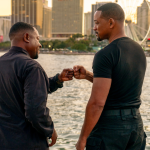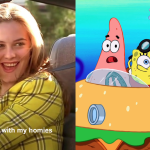
We spoke to one of the winners, Director Angeline Armstrong, about her experience on The Shoot.
Angeline Armstrong, Director.
What was the movie or scene or moment that made you want to get into film? Despite the fact that my film taste ranges from French New Wave and Jarmusch, to Tarantino, to Studio Ghibli animation, to dreamlike Gondry and Jean Pierre-Jeunet…the film that really caught me was the Fellowship of the Ring, and that entire trilogy – the extended editions of course. I was 8 years old and I saw the Fellowship on the opening night with my parents at a beautiful old cinema in Melbourne. I was so engulfed and enthralled by the world before me; the silver screen became a window into another universe…full of real people and real places and real stories.
What did you learn from Baz Luhrmann’s masterclass? The biggest realisation was the necessity for a storyteller – be they writer, director or both – to be able to distil their story idea or vision into a clear and comprehensive summary. With so many broad and wild ideas floating around the place, it’s actually one of the hardest skills to internalise I think; the ability to distil all of those ideas and dreams and visions, into a few sentences of clarity. Pinpointing what is really at the very heart of the story and the vision.
What is the most difficult part of the creative process? I think it differs depending on the scale of the project or the nature of the film. In this case, the most difficult part were those two intensive days of pre-production before the shoot. There was, I must admit, I huge amount of self-doubt and anxiety, we were completely thrown in the deep end, I did feel for a little while there that I was drowning and might never resurface in time. It was quite terrifying and very challenging, I know a lot of us hit a bit of a low point and almost broke down somewhere during the pre-production phase. There were a lot of factors, but largely I’d attribute it to a need to prove yourself and do an excellent job, whilst actually beginning to understand the inevitable gaps in your knowledge, skill and experience.
What was it like working with new people? What were the biggest challenges of collaborating with so many different people? Working with new people is something I hope to do for the rest of my life. There’s always that initial excitement of new ideas, new faces, new back stories. Everyone has something new to give and share and contribute, and inevitably, that’s going to end in something beautiful. How can it not? Especially in a situation like filmmaking where everyone has a passion and devotion to the same craft. Everyone on this shoot was special in their own way, we all brought something different yet I was amazed by how aligned and unified we were in vision before even having met each other before.
What is the funniest thing that happened on set? By far, the funniest moment was when we let Sam run his one long take of improv. There were toys flying everywhere, plenty of priceless facial expressions, a staged theatre show of finger-puppets on top of his hairy head of hair, office chairs spinning across the floor…Sam has a real gift for making people laugh, the whole cast and crew were crowded into this cold grey basement that served as his ‘control room’ and he just lightened up that space, brought a real warmth to it. Everyone was in fits of laughter, unable to make any noise while rolling, the laughter manifested itself in tears running down our faces. It was great.
What do you think is missing from the Australian film and television industry and why? From what I observe, the biggest thing that’s missing from the industry is money. I know it sounds like a cop out answer, but the reality is we’re competing with American feature films and television series that have higher budgets, more time and can take bigger risks. Inevitably the higher production value merely throws a harsh light on the inferior budgets of Australian productions. However, although the higher budget and subsequently ‘more time’ factor is something that individual creatives cannot change alone, taking bigger creative risks is a pursuit available to us. Innovation rises out of constraint. I think that’s apparent in the rising variety of Australian television drama; we are making intelligent shows that appeal to wide audiences, regardless of budgets, there is always inherent value in well-written stories.
How did Samsung’s brand new technology – the GALAXY Note 3 and GALAXY Gear – help you to make your film? The GALAXY Note 3 is a really great smartphone for filmmakers. The screen is beautifully clear and big, I spent a lot of time searching Google for reference images and sharing them via Dropbox with my Designers. The in-built camera, Scrapbook function, as well as generally just being a very quick, responsive, non-laggy and functional phone, all contributed to effective and efficient communication on The Shoot. The GALAXY Gear, aside from just being a beautiful piece of technology, was really handy for taking photos when my phone was elsewhere and for keeping track of important incoming calls and messages on-set and during production.





